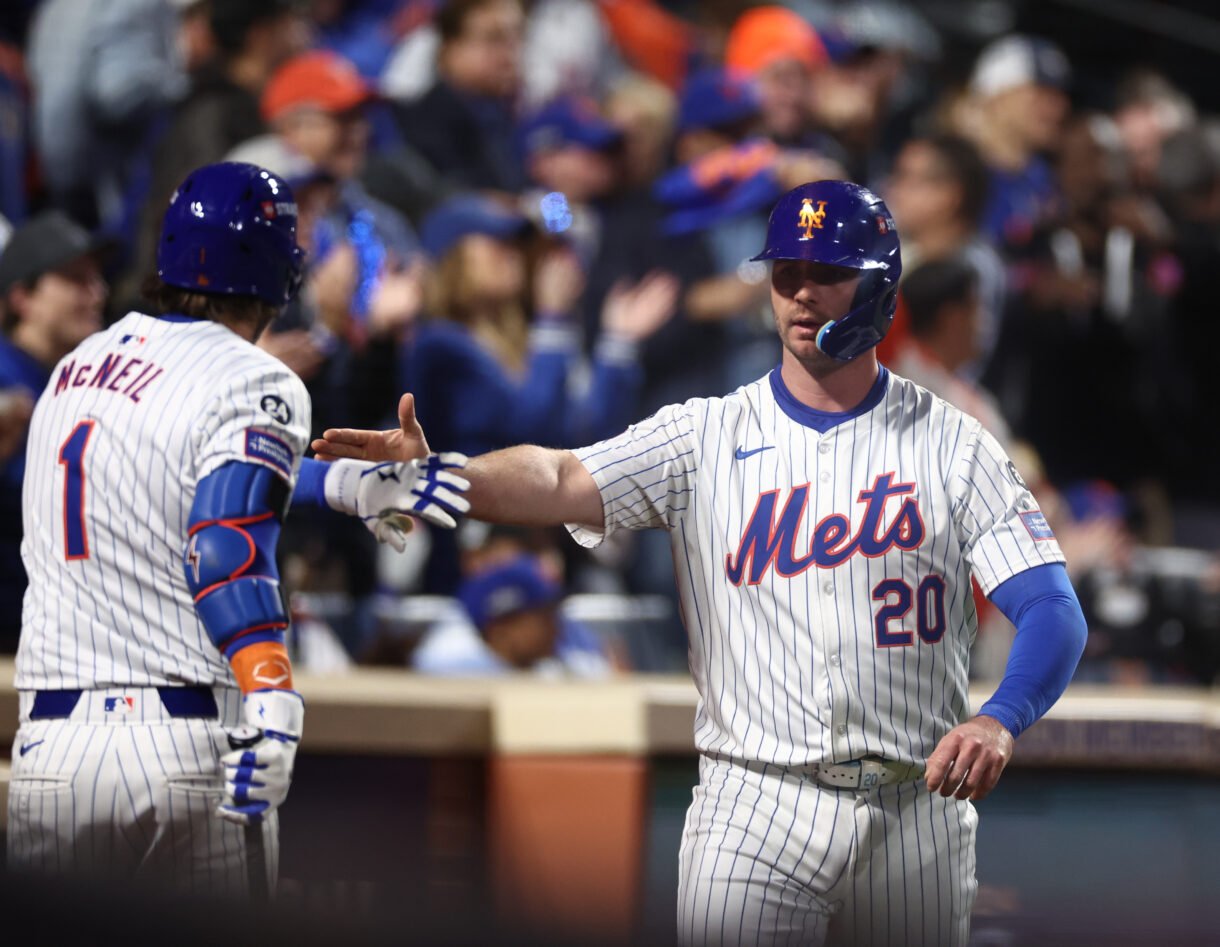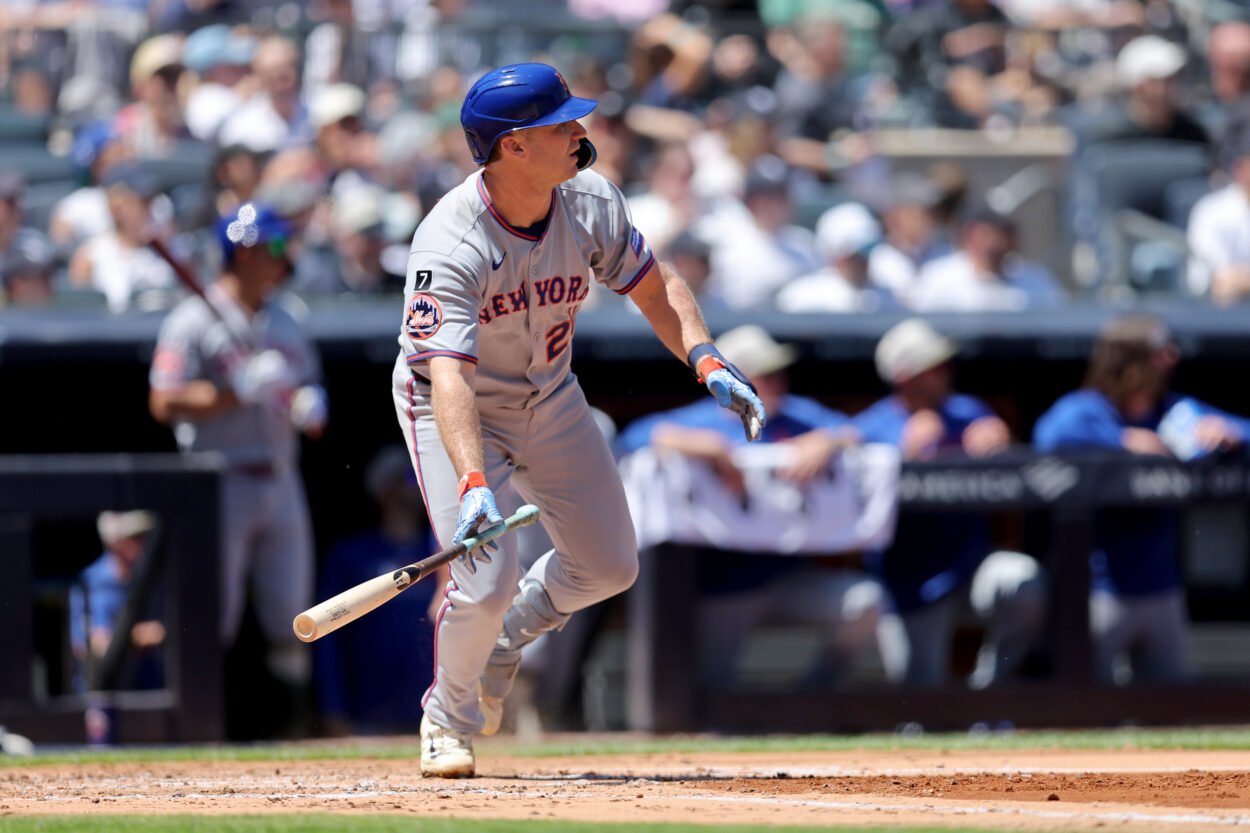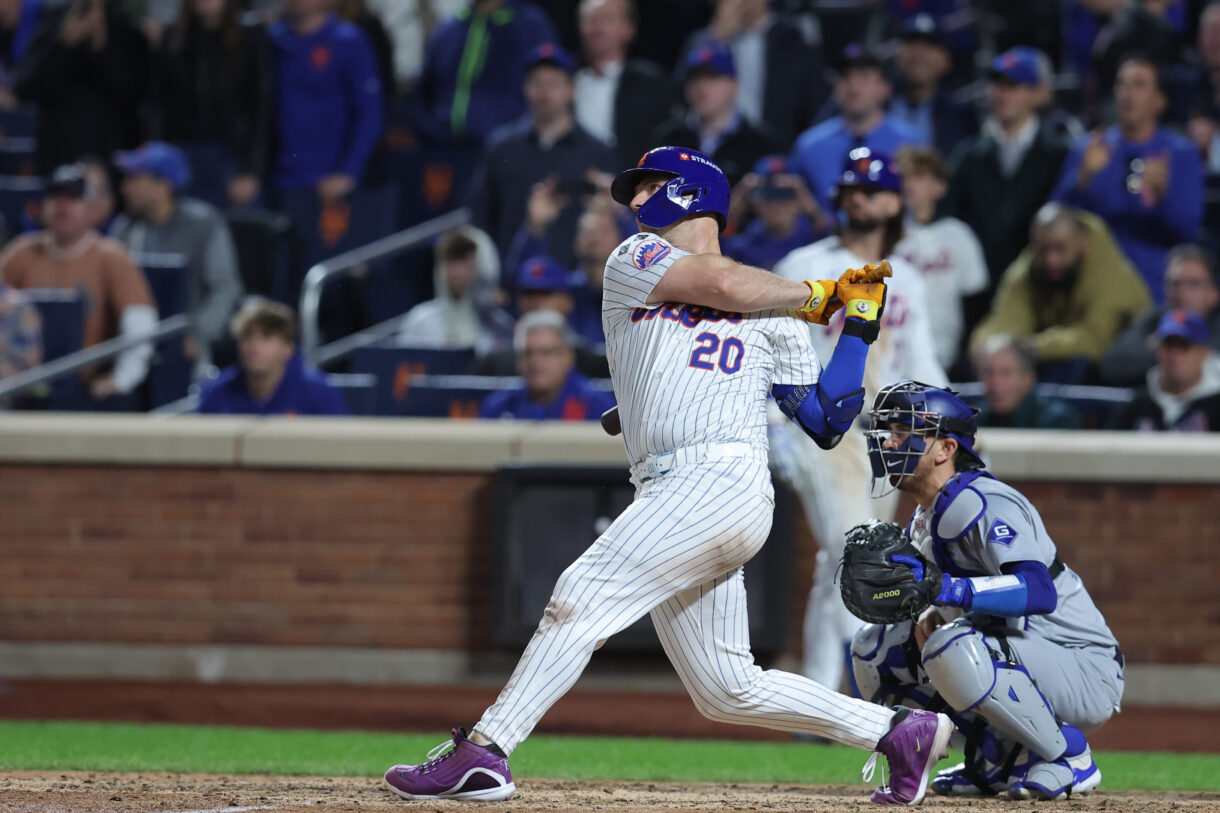
The New York Mets find themselves at a crossroads, one that could reshape the franchise for years. For all the frustration that came with their up-and-down season, the Mets’ offense was far from a weakness. They quietly finished fifth in MLB in wRC+ (112), tied for ninth in runs scored (766), and cracked 224 home runs — numbers that suggest a potent, balanced attack. But for a club with championship ambitions, “good” isn’t enough. They want to be great, and that’s where Pete Alonso’s future enters the equation.
A Powerhouse at the Plate
Alonso was once again the heart of the Mets’ lineup. The first baseman hit .272 with a .347 on-base percentage, slugged .524, and smashed 38 home runs — good for a 141 wRC+ and 3.6 WAR. Few players in baseball can change a game with one swing the way Alonso can. He’s been the emotional core of the team since debuting in 2019, the kind of player who feels as synonymous with the Mets as the home run apple itself.
But now, he’s betting on himself again. After signing a two-year, $54 million deal before the 2025 season, Alonso has said he will opt out of the second year, re-entering free agency at age 30. This time, he does so without a qualifying offer attached, making him even more appealing to clubs looking for a middle-of-the-order threat.

The Market vs. the Metrics
Mets fans have made their feelings clear — they want Alonso back. He’s beloved in Queens for his power, personality, and blue-collar edge. Yet inside the front office, emotion doesn’t carry the same weight.
President of baseball operations David Stearns has built his reputation on discipline and data. According to MLB insider Joel Sherman, Stearns may not view Alonso as a fit for the long-term puzzle, regardless of fan sentiment.
“I think Alonso, without the qualifying offer, and off of the good platform and with the teams needing offense the way they do, he’s clearly going to opt out of the $24 million he’s owed in 2026,” Sherman said. “And he’s going to a marketplace, I think, that is going to treat him better than he was treated last year.”
Sherman added that Stearns likely wouldn’t commit to Alonso’s profile long-term — a 31-year-old by Opening Day, right-handed slugger, limited defensively, and not the type of athlete the executive typically builds around. To Stearns, roster construction is a chess match, not a popularity contest.
“I think, left to his own devices, David Stearns would not bring this player back,” Sherman stated.
Cohen’s Dilemma: Logic vs. Loyalty
This is where Steve Cohen’s influence looms large. The Mets owner waited years to hire Stearns, trusting him to make rational, forward-thinking decisions. But Cohen also understands the emotional pulse of the fan base. Alonso isn’t just another free agent — he’s a homegrown star, a fan favorite who embodies the identity Mets fans crave.

Sherman raised the question every Mets fan is asking: “Does Steve Cohen step in? Does the fan base screaming matter here? Stearns was hired to make unemotional decisions. Does Cohen let him make an unemotional decision here?”
A Franchise at a Crossroads
The Mets’ decision on Alonso is more than a contract negotiation; it’s a statement of philosophy. Are they a team that follows analytics wherever they lead, or one that values the human connection between player and city? Losing Alonso could feel like ripping out part of the team’s soul, but keeping him at the wrong price could limit flexibility for years to come.
Baseball, like any long season, tests patience and conviction. Sometimes, as the Mets are learning, it also tests the heart.
